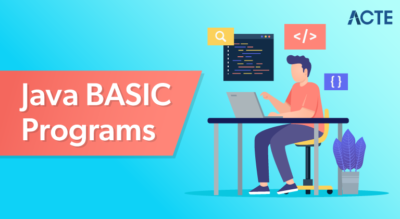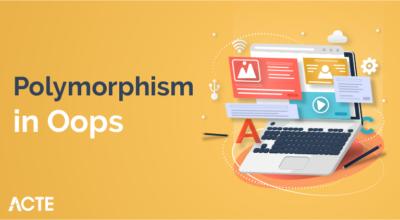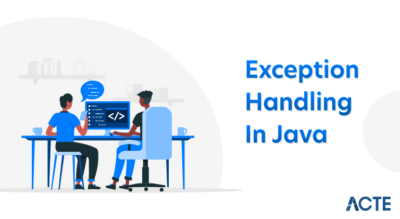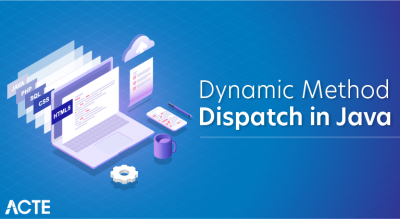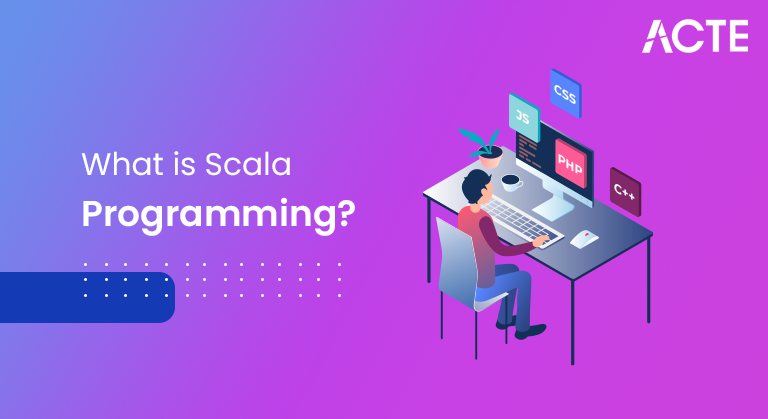
It is designed to grow with the demands of its user, from writing small scripts to building a massive system for data processing. Scala is used in Data processing, distributed computing, and web development. It powers the data engineering infrastructure of many companies.
- Introduction of Scala Programming
- Tools of Scala Programming
- Breaking Opportunities and Impact of Scala Programming
- Features / Characteristics
- Types/methods of Scala Programming
- Synatx of Scala Programming
- How it works
- Why it is needed and important?
- Trends of Scala Programming
- Benefits of Scala Programming
- Conclusion
Introduction to Scala Programming:
Scala is a programming language that combines object-oriented features with functional language features. This editing language was developed by Martin Odersky and released in 2003. It has been used to improve a number of applications that may be simultaneously in recent years. Scala is a standard, high-level, multi-programming language. It is a pure language of object-oriented planning that also provides support for effective planning. There is no concept of old data as everything is a thing in Scala. It is designed to express familiar programming patterns in a refined, concise, and secure way. Scala programs can convert to bytecodes and can work in JVM (Java Virtual Machine). Scala stands for Scalable Language. It also offers Javascript operating times. Scala is heavily influenced by Java and other programming languages such as Lisp, Haskell, Pizza, etc.
Scala Appearance:
Scala was designed by Martin Odersky, a professor of programming at the Polycole Polytechnique Fédérale de Lausanne (EPFL) in Switzerland and a German computer scientist. He started designing Scala in 2001. Scala was first released in 2004 on the Java platform as its first version. In June 2004, Scala hosted the .Net Framework. It was soon followed by the second version (v2.0) in 2006. At the JavaOne conference in 2012, Scala was awarded the winner of the ScriptBowl competition. As of June 2012, Scala has not provided any support for.Net Framework. The latest version of scala says 2.12.6 released on 27-Apr-2018.

Tools used in Scala Programming:
Scala IDE Eclipse
Yes there is a Scala extension of Eclipse. Why not? This Scala IDE provides dedicated support for developing clean Scala and mixed applications. Scala IDE 3.0 offers a wide range of developer tools and features, as well as a few significant bug fixes. Advanced editing tools include coding, clear and semantic highlighting, and a whole new set of indicators. There is a shiny Scala bug fixer to make your lives easier, as well as a reliable Junit detector to test and eliminate inconsistent errors.
ENSIME
This is one of two things. Emacs and Atoms are both text editors who are very supportive of Scala, but today we are focusing on the basic technology that makes this possible – ENSIME. ENSIME is a free software designed to bring features like Scala and Java IDE to your favourite text editor. ENSIME is by no means a text editor or IDE. To use it, you need a build tool, an .ensime file, and a text editor. The build tool downloads the ennime-server and the text editor presents it. Although this is less involved than most IDEs, the benefits are excellent. ENSIME supports content completion as well as semantic highlighting and ambiguous expansion. Engineers can jump to source code or scripts easily. ENSIME displays targeted types, supports refactorings, and most importantly, squiggly red lines appear in your code to highlight errors and alerts. More information about ENSIME can be found here. ENSIME is a free software that relies on donations and support from developers just like you.
IntelliJ IDEA
IntelliJ IDEA has created these types of lists before as this competent and ergonomic IDE of JVM provides multilingual support. Although this is technically a Java IDE, IDE provides support for many other languages such as Scala, Groovy, Kotlin, JavaScript, TypeScript and SQL. In addition to many features, IntelliJ IDEA provides Scala-specific support for ScalaTest testing. This allows engineers to perform unit tests easily. Other features include intelligent finishing, language injection, site-focused editor, and many useful building tools. More information about the IntelliJ IDEA can be found here. Although IntelliJ IDEA Ultimate requires purchase and annual subscription, the public version is open source.
NetBeans
NetBeans IDE allows developers to quickly and easily upgrade desktop, mobile and web applications. Thanks to its many editing, analysis, and editing features, NetBeans IDE makes things easier for developers. The only project management tool is worth looking at. The NetBeans Scala plugin includes a full Scala editor, complete with syntax colour and semantic colours, draft navigator, code completion, and more. There is also a debugger, interactive console, and integration with Junit and Maven. More information about the NetBeans Scala plugin can be found here. NetBeans is free, is open source, and moves to Apache.
Vim
In fact, this is sometimes the biggest complaint about Vim: developers have to install multiple plugins to get exactly the environment they want. That being said, Vim has a number of Scala plugins to make it work. Vim-scala is a great basic plugin that you have to manage syntax. The popular code finishing plugin is deoplete.nvim, a powerful asynchronous finishing frame with dark power. Fzf is an independent Vim command line program that handles things like Jump to File and Jump to Definition.
Features / Characteristics to Scala Programming:
Object Oriented: Scala is a pure language centred on an object where each value is considered an object. Behaviour and object categories are defined by classes and features. Most Heritage is supported by mixin-based composition and extending classes by splitting into smaller sections.
Functional: Scala is an active programming language where each function is valued. Scala supports Nested and Higher Order functions as well as provisions to define anonymous functions.
Firmly typed: Scala implements a type of system that provides barriers and abbreviations for safe and consistent use in other words Scala is a strictly typed language. Support system type includes different annotations, standard categories, top and bottom borders, explicitly typed indicators, views and polymorphic methods. The Local Type Inference mechanism ensures that there is no need to define a system with unnecessary type information. All of this together builds a strong foundation for the safe reuse of system summaries.
Extensible: Scala offers a combination of a different language approach and that is why it is so easy to integrate the construction of a new language in the form of libraries. The closure is built automatically over the expected type and either method can be used as an infix or postfix operator. New statements can be easily made without extending syntax and editing resources such as large meta.
Works on JVM: Scala runs on Java Virtual Machine (JVM) and when the scala system is integrated, a byte code generated by JVM is generated. Both Scala and Java share a common platform so java programs can be converted to Scala.
Using Java Code: Scala can use all Java SDK classes, custom java classes or Java open source projects.
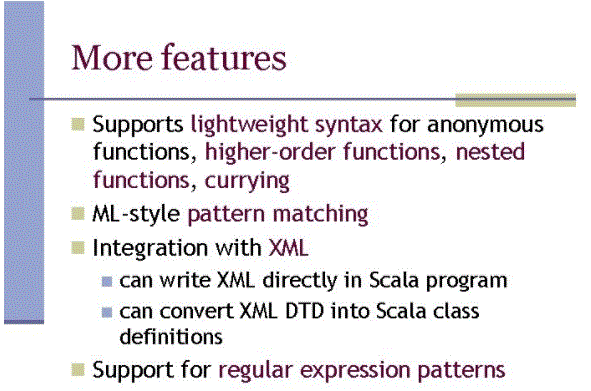
- AnyVal
- AnyRef
- Example:
- // Scala Program Scala kind hierarchy
- // making AN object
- into Geeks
- the most methodology
- def main (args: Array [String])
- )
- list.foreach (element => println (element))
- “>
- }
- Output
- lies
- 66677
- 732
- a
- abs
Types of scala:
Type of Scala Hierarchy
There aren’t any primitive varieties in Scala (unlike java). All kinds of knowledge and information} in Scala are objects with practicality in their data. All Scale models are out there as a part of a class list. All the categories we have a tendency to describe in Scala also will be a part of this class by default.
Any taxonomic category of all classes, additionally referred to as premium. Defines specific international strategies like equivalent, hashCode, and toString. every has 2 specific subclasses:
AnyVal represents worthy classes. All worthy classes are outlined in advance; are compatible with older forms of Java. There are 9 forms of predefined values and they will do nothing: Double, Float, Long, Int, Short, Byte, Char, Unit, and mathematician. Scala has each number (e.g., Int and Double) and non-numerical forms (e.g., Series) that may be wont to describe values and variables. The dream variables will solely be true or false. Char literals are written in single quotes.
AnyRef stands for reference categories. All non-value varieties are outlined as reference varieties. User-defined categories outline reference varieties automatically; i.e. regular (indirectly) taxonomic group scala.AnyRef. scala.AnyRef in the java system is compatible with java.lang.Object.
Nothing and Null: Nothing is an element of each worth, additionally referred to as the bottom type. kind None UN worth. we are able to use Nothing to indicate inconsistencies like a special drop, program exit, or endless loop. Null is a subclass of all reference types. the keyword null can identify a single value. Null is primarily offered to work with other JVM languages.
- Object is a keyword, HelloWorld is the name of the object to be created.
- The implementation of the Scala program starts in the main way so the main method is defined by passing the string list as an argument.
- Def is a keyword that indicates how we define its term “main”. We use println to print “Hello World”.
- Scala programs are a HelloWorld sensitive one that is different from helloWorld.
- The first letter of the Class Name must be a capital letter.
- The filename must be exactly the same as the object name.
- The names of the routes should start with lowercase letters.
- After typing the program above in the scala shell use the program we get the message “specified object HelloWorld”.
- case>
- thing
- HelloWorld {|
- def main (args: Array [String])
- {| println (
- “Hello World!!”
- ) | } | }
- Now use the HelloWorld program as;
- case>
- HelloWorld.main (null)
- Hello World!!
Syntax with examples:
Let’s consider a simple hello world plan and understand the basic structure of the scala system. This is just the beginning and will go into the process of setting up and installing in detail in the next article.
- // Scala Print Program Hello, Geeks!
- // by using an object-focused approach
- // to create an object
- Object Geeks {
- // The main method
- def main (args: Array [String])
- {
- // prints Hello, Geeks!
- println (“Hello, Geeks!”)
- }
- }
- Output:
- Hello, Geeks!
- Comments: Comments are used to describe the code and are used in the same way as in Java or C or C ++. Composers ignore comment entries and do not use them.
- Comments can be single line or multiple lines.
- One-line comment:
- Syntax:
- // One-line comment
- Multi-line comments:
- Syntax:
- / * Comments have multiple lines
- syntax * /
- object Geeks: an object is a key word used to build objects. Here “Geeks” is the name of the object.
- def main (args: Array [String]): def keyword in Scala used to describe the function and “key” is the Main Path. args: Array [String] is used for command line arguments.
- println (“Hello, Geeks!”): println is a Scala method used to display a unit of characters in a console.
How its works:
Editing in Scala: Since Scala is very similar to other widely used syntactically used languages, it is easy to code and learn in Scala. Apps can be written with Scala on any of the most widely used text editors like Notepad ++, gedit, etc. or to any text editors. Save the file with the extension .sc or .scala.
For Windows & Linux: Before you can install Scala on Windows or Linux, you must have Java Development Kit (JDK) 1.8 or higher installed on your system. Because Scala always works on Java 1.8 or higher.
In this article, we will discuss how to implement Scala programs in online IDEs.
Example: A simple print program Hello Geeks! by using an object-focused approach.
Why it is important?
Scala has many reasons to be popular among program organisers. Here are a few reasons:
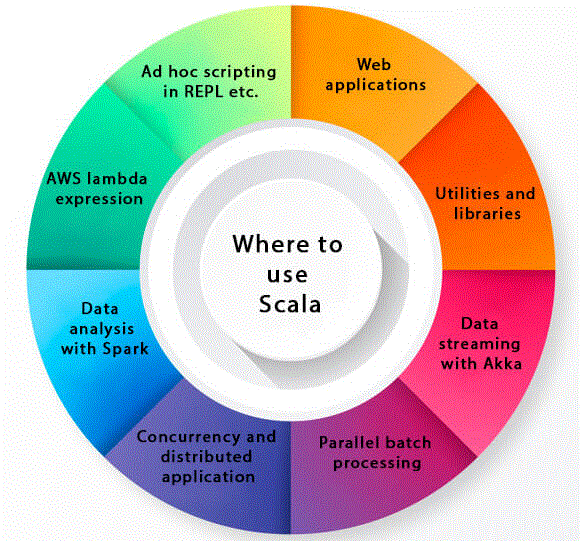
Easy to Get Started: Scala is an advanced language so it is close to other popular programming languages like Java, C, C ++. So it is very easy to learn Scala for anyone. For Java programmers, Scala is very easy to learn.
Contains advanced features: Scala contains features for different languages such as C, C ++, Java, etc. which makes it very useful, flexible and productive.
Turn off Java integration: The Scala source code is designed in such a way that its compiler can interpret Java classes. Also, Its Organiser can use Frames, Java Libraries, and Tools etc. After integration, Scala programs can run on JVM.
Web Support & Desktop Development: In web applications it provides integrated support in JavaScript. Similar to desktop applications, it can be integrated into JVM bytecode.
Used by Big Companies: Most of the famous companies like Apple, Twitter, Walmart, Google etc. submit most of their codes to Scala from other languages. The reason being that it can be very measurable and can be used in background tasks.
Scala Activity
A function is a group of statements that perform a function. You can split your code into different functions.
Scala has both functions and methods and we use the word method and we work in rotation with little difference. The Scala method is part of a class with a name, signature, specific annotations, and a specific bytecode where the function in Scala is a complete variable that can be assigned a variable. In other words, a function, defined as a part of something, is called a method.
A job description can appear anywhere in the source file and Scala allows job descriptions to nest, that is, job descriptions within other job descriptions. The most important point to note is that the name of the Scala function may contain characters such as +, ++, ~, &, -, -, \, /,:, etc.
- Scala’s sophisticated features provide better coding and better performance.
- Tuples, macros, and functions are a development in Scala.
- It incorporates an object-oriented program and functionality that makes it a powerful language.
- It is highly scalable and thus provides better backend performance support.
- Reduce the risk of high thread-security associated with Java.
- Because of the operating system, usually, the user ends up with a few lines of code and distractions that result in high productivity and quality.
- Because of the lazy calculations, Scala counts expressions only when they are needed in the system.
- There are no fixed and flexible modes in Scala. Uses singleton (class with one item in source file).
- It also gives a sense of Traits. Symbols are a set of invisible and non-visible ways that can be integrated into a Java connection.
Benefits of Scala Programming:
- Scala text: http://docs.scala-lang.org/ and http: //docs.scala-lang.org/tutorials/.
- Edited at Scala by Martin Odersky, Lex Spoon, and Bill Venners. Available as a free PDF e-book.
- Scala for Example by Martin Odersky. Available as a free PDF e-book.
- Tutorialspoint Scala Tutorials.
- Scala editing by Dean Wampler and Alex Payne. Published by O’Reilly. Available on Amazon.
Conclusion
Scala is a flexible and powerful language for general purpose, built on the Java Runtime Environment, and can be easily integrated into existing Java applications. Language offers a rich set of methods for dealing with many Java language shortcomings, and is an exciting combination of practical and focused paradigms.
I hope you enjoyed this e-book. I really enjoyed writing it. Many other interesting topics still exist, such as keyword yield and currying. There are also many Scala-related resources available (both free and in book form). Scala is one of the most interesting modern languages, and it was quickly adopted by the editors of the program. If you would like to learn more about Scala, I recommend the following sources:

